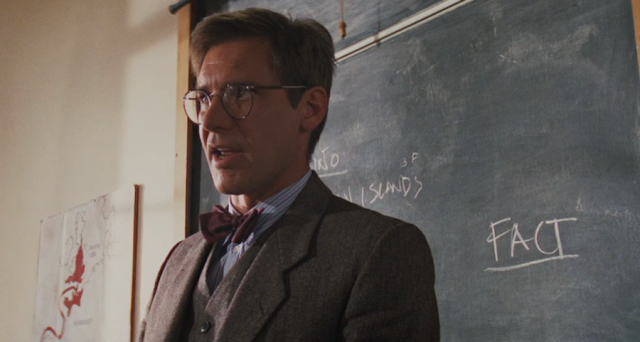Be an archeologist
In the 1989 blockbuster film, Indiana Jones and the Last Crusade, Archeological Professor Henry Jones teaches:

“Archeology is the search for fact not truth. If it’s truth you’re interested in, Dr. Tyree’s philosophy class is right down the hall.”
Archeologists seek to understand ancient civilizations by interpreting facts.
Because we often use these words synonymously let’s examine a definition:
Fact
Something that is known based on empirical research and quantifiable measurement (objective)
Truth
Something that can be based on facts but also includes belief (subjective)
Facts are the first and most important signal.
Shortcuts In Decision Making
Your brain is lazy. It wants to be efficient which means shortcuts and logical leaps. You are hard-wired to make decisions based on beliefs.
Consider the following:
- Fact, Truth and Opinions are often confused
- It’s easier to decide than it is to justify
- You have confidence in your views and experiences
- Empathy is difficult, especially outside your own experiences
Shortcuts in decision-making are high risk. The bigger the shortcut the bigger the risk.
Why Facts
Consider the following experience:
Your company is looking to increase profit and an executive has an idea that she thinks will increase customer conversion. You spend the next two months gathering requirements, planning, building, and publishing the new feature. At the end of the quarter, you review earnings with your team and see that revenues have fallen by 2% since the introduction of the new feature.
You executed the vision of the executive and were efficient with resources and time to market. Your output was impeccable but it did not result in the desired outcome.
What was the problem? You, the executive, and your team executed the vision based on a belief, not a fact. If the feature had been based on facts you would have reached the desired outcome.
Facts and Logic
Making decisions based on facts requires intellectual honesty and constant vigilance.
With an open mind and an understanding of the difference between fact and truth, you are prepared to take the next step on your journey as an archeologist and begin critical thinking. Critical thinking is the ability to make a judgment based on the evaluation of facts.
The following examples demonstrate critical thinking:
-
Your usually happy and considerate friend Jim is angry, expressing his thoughts through a series of snide comments and complaints.
- Something is bothering Jim and he is having difficulty communicating it
-
You have been asked to increase profitability before the end of the company’s fiscal year either by reducing costs or increasing sales.
- A few big deals are looming that the team should focus on closing
Case Study
We will revisit the following scenario to illustrate extracting facts and using critical thinking to reduce noise.
You have been asked for the 3rd time to explain how a system is designed, how it functions, and its purpose. You have already explained the system to interested parties both verbally, and with the assistance of a diagram.
What are the facts? What might be the underlying problem?
Let’s take a look at problem-solving in the abstract and then revisit this scenario.